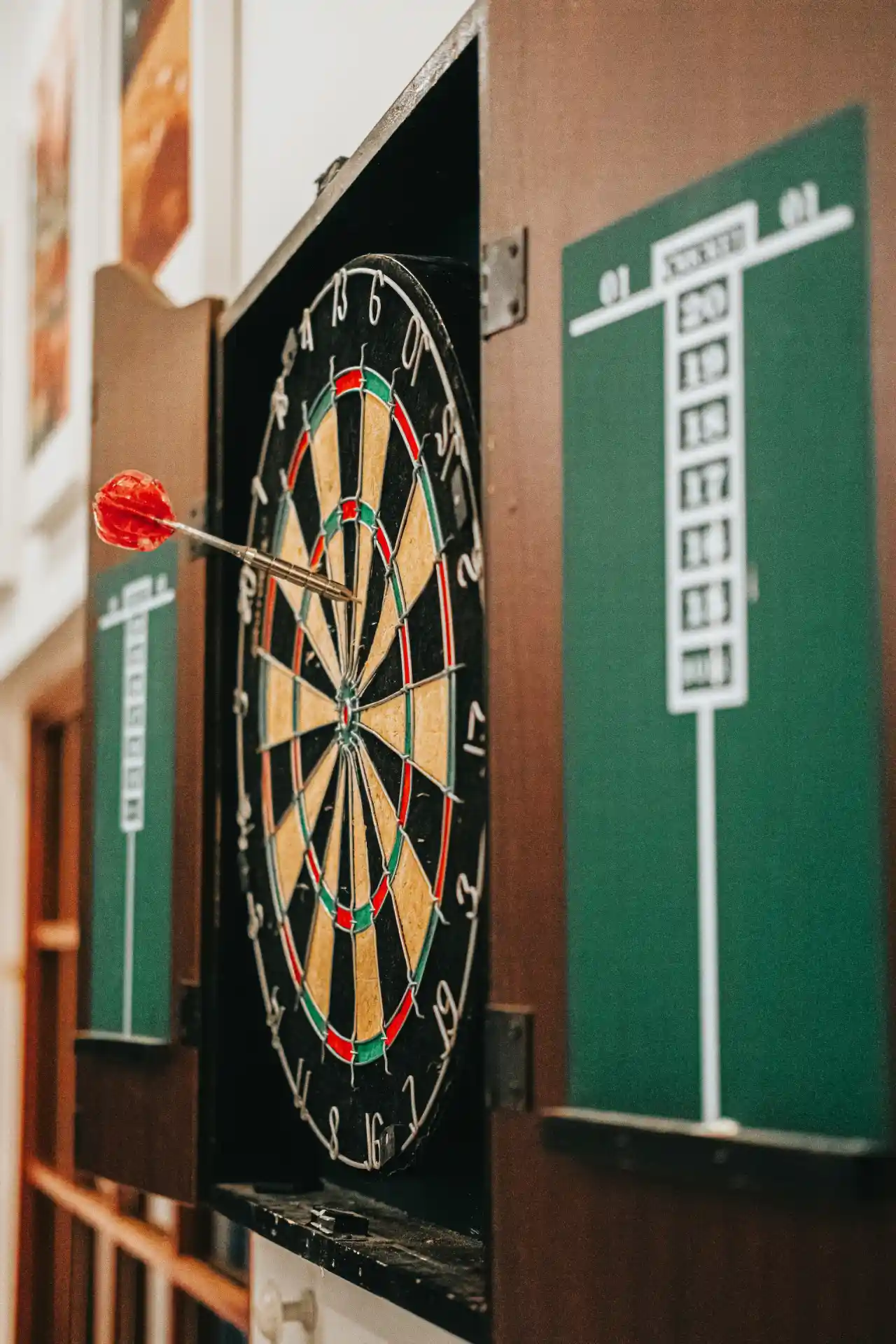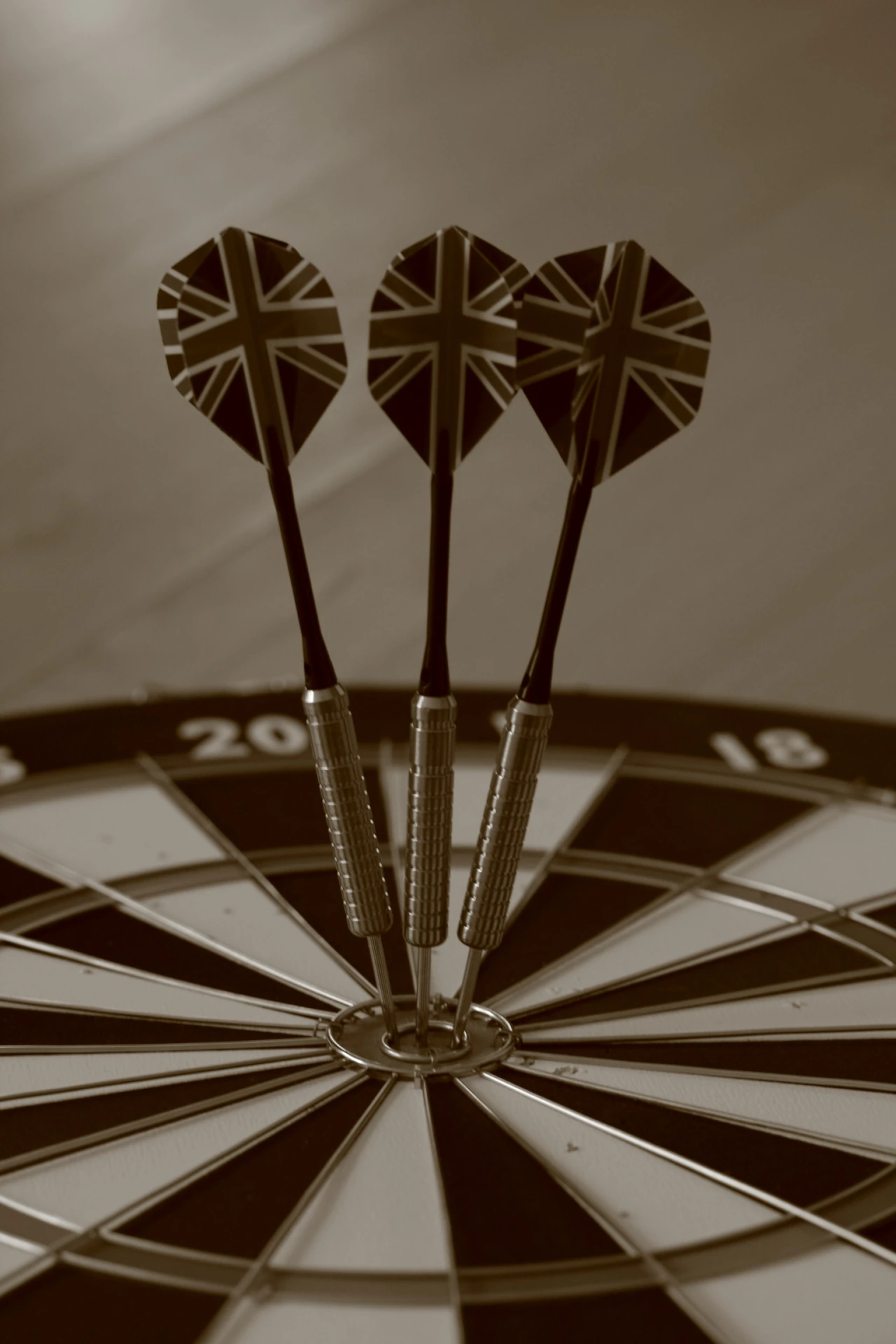- +1 (212)-695-1962
- info@elementskit.com
- 463 7th Ave, NY 10018, USA
Current Divisions
Team League
Team League is divided into “Divisions”; plays begins at 8 pm on Thursday nights (holidays excluded).
‘Breaks’ are to be 10 minutes in length and start by mutual agreement between the teams.
**see next page for Singles League formats**
Below is a list of the current formats. A “Set” is best 2 out of 3 unless specified otherwise.

Premier & 1st Division - requires 2 boards
6 sets of Singles – 501 straight in; double out
4 sets of Doubles – 601 straight in; double out
Break
6 sets of Singles – 301 double in; double out
4 sets of Doubles – 601 straight in; double out
2nd Division (18 Game) - requires 2 boards
4 sets of Singles – 501 straight in; double out
2 sets of Doubles – 601 straight in; double out
4 sets of Singles – 301 double in; double out
Break
4 sets of Doubles – 601 single in; double out
4 sets of Singles – 501 straight in; double out
3rd Division (16 Game) - requires 2 boards
4 sets of Singles – 501 straight in; double out
2 sets of Doubles – 601 straight in; double out
4 sets of Singles – 301 double in; double out
Break
2 sets of Doubles – 601 straight in; double out
4 sets of Singles – 501 straight in; double out
4th Division (12 game) - requires 2 boards
Singles X 2 sets (2 of 3 games) 501 straight in double out
Doubles X 2 sets (2 of 3 games) 601 straight in double out
Singles X 2 sets (2 of 3 games) 501 straight in double out
Break (Rule 6.5)
Singles X 2 sets (2 of 3 games) 501 straight in double out
Doubles X 2 sets (2 of 3 games) 601 straight in double out
Singles X 2 sets (2 of 3 games) 501 straight in double out
5th Division (6 Game) - requires 1 board
3 team games – 1001 straight in; double out
Break
3 team games – 1001 straight in; double out
Singles League
Singles League is divided into 4 formats; play begins at 7:30 on Monday nights (holidays excluded).
Locations for each format are constant and are determined based on number of registrants.

Premier Format (24 games)
2 games of Standard Cricket
8 games – 301 double in; double out
14 games – 501 single in; double out
Intense Format (24 games)
2 games of Standard Cricket
8 games – 301 double in; double out
14 games – 501 single in; double out
Intermediate Format (18 games)
2 games of Standard Cricket
8 games – 501 double in; single out
8 games – 301 double in; double out
Introductory Format (12 games)
6 games – 501 single in; double out
6 games – 301 double in; double out
STANDARD CRICKET
Cricket is the most common dart game played in bars across America. Cricket is a game that, unlike x01, requires some strategy which can help a weaker player beat a stronger player.

The Object
The object of the game is to “close” all your numbers (20 down through 15 and bulls-eye) and end up with
more or equal points to your opponent. To close a number, you must hit three of that number.
The Scoring
The scoreboard is drawn with the numbers 20 through 15 and bullseye written in descending order down the
center of the board. Bullseye is usually abbreviated with a B. Each dart that lands in any of the games numbers
count toward closing that number. The thin outer ring counts as two of that number and is called a “double”.
The thin inner ring counts as three of that number and is called a triple. Scoring for one dart is shown by
placing a slash ( \ ) next to the number scored. Scoring for two is shown by placing an X next to the number
scored. Scoring for three is shown by placing a circle next to the number to indicate it is closed. When three of
a number is scored in any combination, it is closed.
The Play
The players each take a turn throwing one dart at bulls-eye, closest dart to the bullseye gets to throw first. The
first player throws three darts at any of the scoring numbers to try to close that number and/or score points
(points will be explained later, and games can be played without points). The player then scores the darts that
he has thrown and play alternates until one person closes all their numbers and has more or equal points to
the opponent.
Now let’s talk about points. Points are what makes the game of Cricket very interesting. After you close a
number, if your opponent does not have the same number closed, any darts that land in that number count as
points for you and are totaled on your side of the board. For example, you have your 18 closed and your
opponent only has one 18; you throw a triple 18, you now have 54 points added to any points you may have
already scored. If your opponent now throws a triple 18, only two count to close the number. The third does not
count for points because your 18 is already closed. If a player has all of their numbers closed including
bullseyes but has less points, that player has not yet won the game. He must throw enough points to be even
or ahead of the opponent. If the only number the opponent has open is bullseyes, then the player must throw
extra bullseyes at 25 points each (or 50 points for the double bulls-eye).
Strategy
The best strategy is to close the highest numbers first in descending order (this is the reason they are written
that way on the scoreboard). The reason for this is that if points are scored, the player with the higher number
closed has a big advantage. If you closed your 20 and scored 20 points in your first round, your opponent
would have to throw TWO 19’s after they are closed to make up the points and score 38.
One important note that I should point out (no pun intended): Deliberately shooting too many points can lead to
a bar-room brawl. Darts is considered a “polite game” much like golf. Players do not typically “point monger”
each other. Staying one or two bullseyes ahead (25 to 50 points) is acceptable. Throwing more points on
another player that is not an INCREDIBLY stronger player is not a good idea.
On the other hand, by scoring an appropriate number early and simply staying on top of the other player, a
weaker player can often beat a stronger player by making the other player have to throw extra bullseyes to end
the game. Be very careful with this strategy though, sometimes the other player might suddenly turn the tables
and will be sure to remember all those extra points you threw on him!
